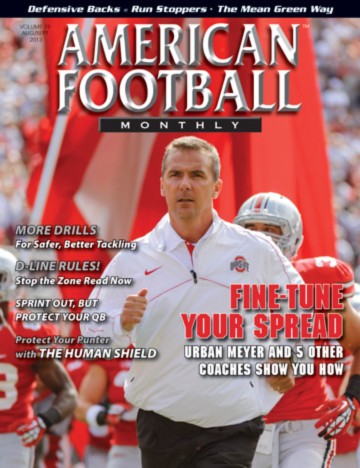Article CategoriesAFM Magazine
|
Speed Report: Fast Twitch for Football Speed - Can it be Produced?by: Dale BaskettFootball Speed Specialist © More from this issue Muscle fibers are made up of two different types of fiber composition, slow twitch fibers and fast twitch fibers. Skeletal muscles are made up of numerous individual muscle fibers called myocytes. Each myocyte contains many myofibrils, which are strands of proteins that can grab on to each other and pull. This shortens the muscle and causes muscle contraction. Of course, contraction can be very fast and dynamic or slower with endurance capabilities. When we think about football speed we naturally desire athletes with fast twitch capacity. Human muscles contain a genetically determined mixture of both slow and fast fiber types. Athletes can have an abundance of one type or a balance of both. A balance between both is common and fairly standard. The abundance of fast twitch is what every football player desires but only ....The full article can only be seen by subscribers.
|
|
|||||||
| HOME |
MAGAZINE |
SUBSCRIBE | ONLINE COLUMNISTS | COACHING VIDEOS |
Copyright 2025, AmericanFootballMonthly.com
All Rights Reserved





